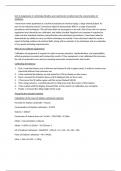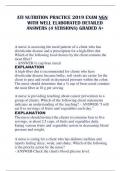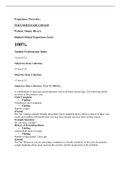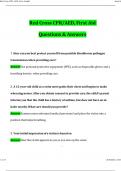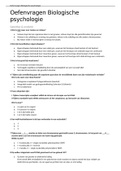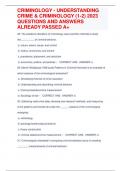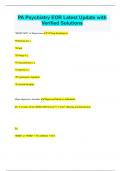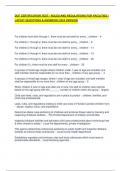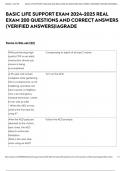Essay
Unit 2 Assignment A: Undertake titration and colorimetry to determine the concentration of solutions.
- Course
- Institution
This is the BTEC Applied Science Unit 2 Assignment : Undertake titration and colorimetry to determine the concentration of solutions, which was awarded a distinction . This is an example of a assignment which was awarded Distinction level, you may use it as a guide to help you achieve a distinction...
[Show more]
